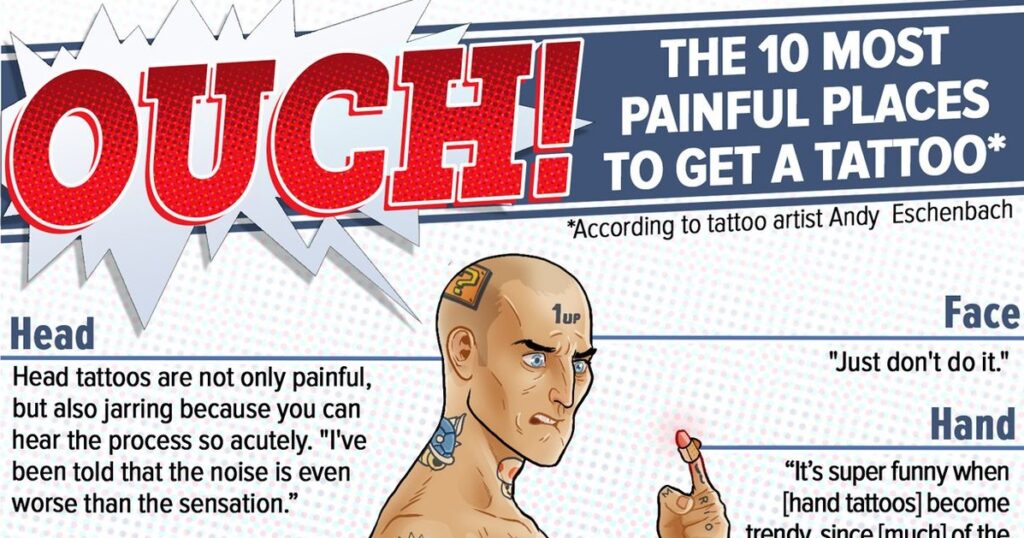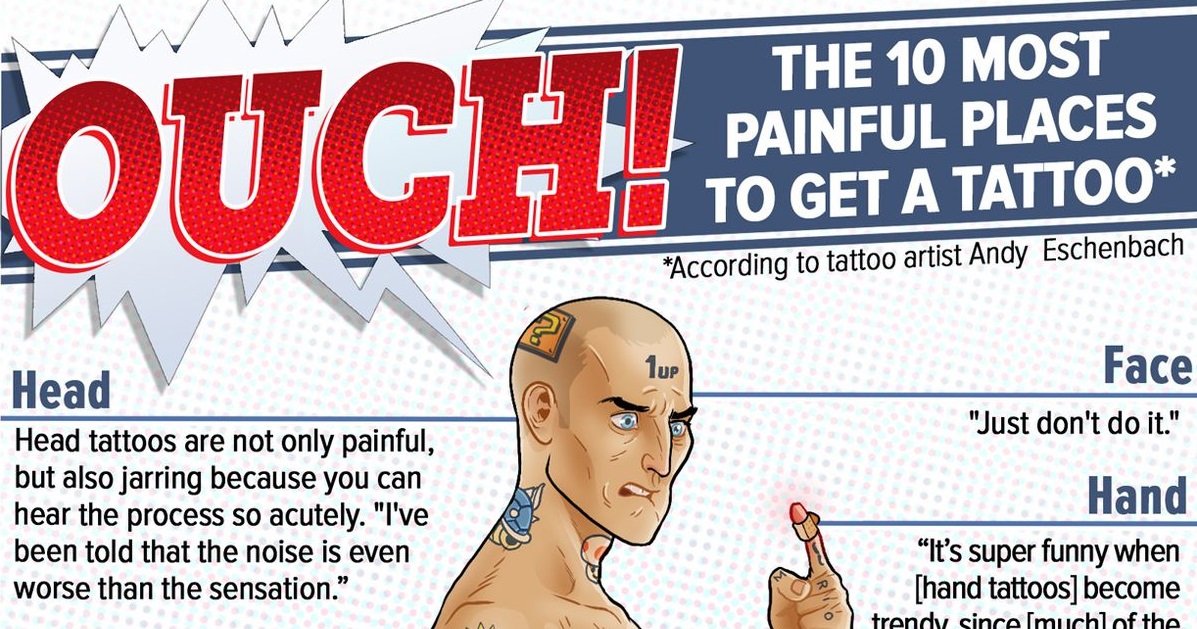
Hand Tattoo Pain: Understanding the Discomfort and What to Expect
Getting a tattoo is a significant decision, and understanding the potential discomfort involved is crucial. When considering a hand tattoo, hand tattoo pain is often a primary concern. This article delves into the specifics of hand tattoo pain, exploring the reasons behind it, what to expect during the process, and how to manage the discomfort. We aim to provide a comprehensive overview for anyone contemplating adorning their hands with ink.
Why Do Hand Tattoos Hurt More?
The level of pain experienced during a tattoo session varies significantly depending on the location of the tattoo. Several factors contribute to the increased hand tattoo pain compared to other areas of the body.
- Thin Skin: The skin on the hands, particularly on the fingers and the back of the hand, is relatively thin. This means there’s less fat and muscle to cushion the needle’s impact.
- Proximity to Bone: The bones in the hand are close to the surface, especially in areas like the knuckles and fingers. The tattooing needle can cause vibrations against the bone, intensifying the sensation of pain.
- Nerve Endings: The hands are rich in nerve endings, making them highly sensitive to pain. These nerve endings are responsible for transmitting sensory information to the brain, and the tattooing process stimulates these nerves, resulting in a heightened pain response.
- Constant Use: Hands are constantly in use, which can make the healing process more challenging and potentially more painful. The skin is subjected to frequent movement, stretching, and contact with various surfaces, which can irritate the freshly tattooed area.
Pain Levels in Different Areas of the Hand
The intensity of hand tattoo pain isn’t uniform across the entire hand. Certain areas are known to be more sensitive than others.
Fingers
Fingers are generally considered one of the most painful locations for tattoos. The skin is thin, and the proximity to bone is significant. Additionally, the constant movement of the fingers during daily activities can prolong the healing process and increase discomfort. Many describe the hand tattoo pain on fingers as sharp and intense.
Knuckles
Similar to fingers, knuckles also experience a high level of pain due to the thin skin and close proximity to bone. The tattooing process on knuckles can be particularly uncomfortable because of the constant movement and flexing of the joints. People often report a throbbing sensation after getting knuckle tattoos.
Back of the Hand
While still painful, the back of the hand is often considered slightly less painful than the fingers or knuckles. There’s slightly more tissue covering the bones, which can provide a small degree of cushioning. However, the presence of numerous nerve endings still contributes to a significant level of hand tattoo pain.
Palm of the Hand
Palm tattoos are notoriously difficult to execute and maintain, often fading quickly due to the high cell turnover rate in the skin. The pain level is considered high, primarily due to the high concentration of nerve endings and the tough, thick skin that requires more forceful needle penetration. Furthermore, palm tattoos tend to fade due to constant usage and washing. Therefore, few artists are willing to do it.
What to Expect During a Hand Tattoo Session
Knowing what to expect during a hand tattoo session can help you prepare mentally and physically, potentially mitigating some of the anxiety associated with the pain.
- Consultation: Before the session, you’ll have a consultation with the tattoo artist to discuss the design, placement, and any concerns you may have about the pain. This is the time to ask questions and express any anxieties.
- Preparation: On the day of the appointment, the artist will clean and shave the area (if necessary). They will also apply a stencil of the design onto your hand.
- The Tattooing Process: The artist will begin tattooing, using a tattoo machine to deposit ink into the skin. The duration of the session will depend on the size and complexity of the design. Be prepared for a consistent, stinging sensation.
- Breaks: Don’t hesitate to ask for breaks if the pain becomes overwhelming. Most artists are understanding and will allow you to take short pauses to compose yourself.
- Aftercare Instructions: After the tattoo is complete, the artist will clean the area, apply a bandage, and provide detailed aftercare instructions. Following these instructions carefully is crucial for proper healing and preventing infection.
Managing Hand Tattoo Pain
While hand tattoo pain is unavoidable, there are several strategies you can employ to manage the discomfort and make the experience more bearable.
- Choose an Experienced Artist: An experienced artist will have a better understanding of the anatomy of the hand and will be able to apply the tattoo with precision and efficiency, potentially minimizing the duration of the pain.
- Stay Hydrated: Drinking plenty of water in the days leading up to your appointment can help keep your skin hydrated, making it easier for the artist to work with.
- Get Enough Sleep: Being well-rested can improve your pain tolerance and overall resilience.
- Avoid Alcohol and Caffeine: These substances can thin your blood, potentially increasing bleeding and discomfort during the tattooing process.
- Use Numbing Creams: Topical numbing creams containing lidocaine can be applied to the area before the session to help reduce pain. However, it’s essential to consult with your artist beforehand, as some creams can affect the ink’s absorption.
- Distraction Techniques: Listening to music, watching a movie, or engaging in conversation can help distract you from the pain.
- Breathing Exercises: Practicing deep breathing exercises can help you relax and manage the pain more effectively.
- Over-the-Counter Pain Relievers: Taking over-the-counter pain relievers like ibuprofen or acetaminophen before the appointment can help reduce inflammation and pain. However, avoid aspirin, as it can thin your blood.
Aftercare and Healing
Proper aftercare is essential for ensuring that your hand tattoo heals properly and minimizes the risk of infection. Here are some key aftercare tips:
- Keep the Tattoo Clean: Gently wash the tattoo with mild soap and water several times a day.
- Apply a Thin Layer of Aftercare Ointment: Use a fragrance-free, hypoallergenic aftercare ointment to keep the tattoo moisturized.
- Avoid Sun Exposure: Protect the tattoo from direct sunlight, as it can cause fading and damage.
- Don’t Pick or Scratch: Avoid picking or scratching the tattoo, as this can lead to infection and scarring.
- Wear Loose-Fitting Clothing: Avoid wearing tight-fitting clothing that can rub against the tattoo.
- Stay Hydrated: Continue to drink plenty of water to keep your skin hydrated.
Long-Term Considerations
Beyond the initial pain and healing process, there are some long-term considerations to keep in mind when getting a hand tattoo.
- Fading: Hand tattoos, especially those on the fingers and palms, are prone to fading due to constant use and exposure to the elements. Regular touch-ups may be necessary to maintain the vibrancy of the design.
- Professional Implications: Depending on your profession, visible hand tattoos may be subject to certain restrictions or biases. Consider the potential impact on your career before getting a hand tattoo.
- Social Perception: While tattoos have become increasingly mainstream, some people may still hold negative perceptions about visible tattoos, particularly on the hands. Be prepared to address any questions or judgments that may arise.
Conclusion
Hand tattoo pain is a significant factor to consider when contemplating getting inked on your hands. While the pain can be intense due to the thin skin, proximity to bone, and numerous nerve endings, understanding the reasons behind the discomfort and employing effective pain management strategies can make the experience more manageable. By choosing an experienced artist, preparing properly, and following aftercare instructions diligently, you can minimize the pain and ensure that your hand tattoo heals beautifully. Remember to consider the long-term implications of visible hand tattoos before making your final decision. [See also: Tattoo Aftercare Tips] Ultimately, the decision to get a hand tattoo is a personal one, and weighing the potential pain against the artistic expression and personal meaning behind the design is essential.

